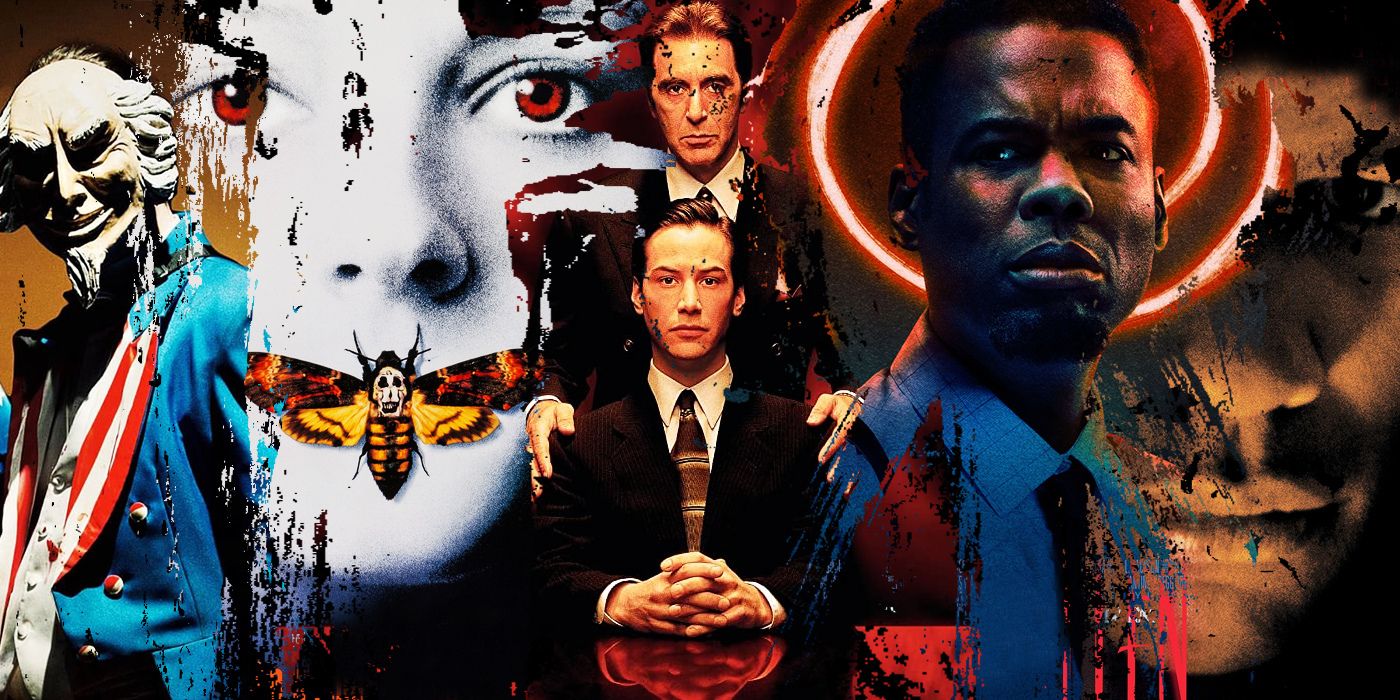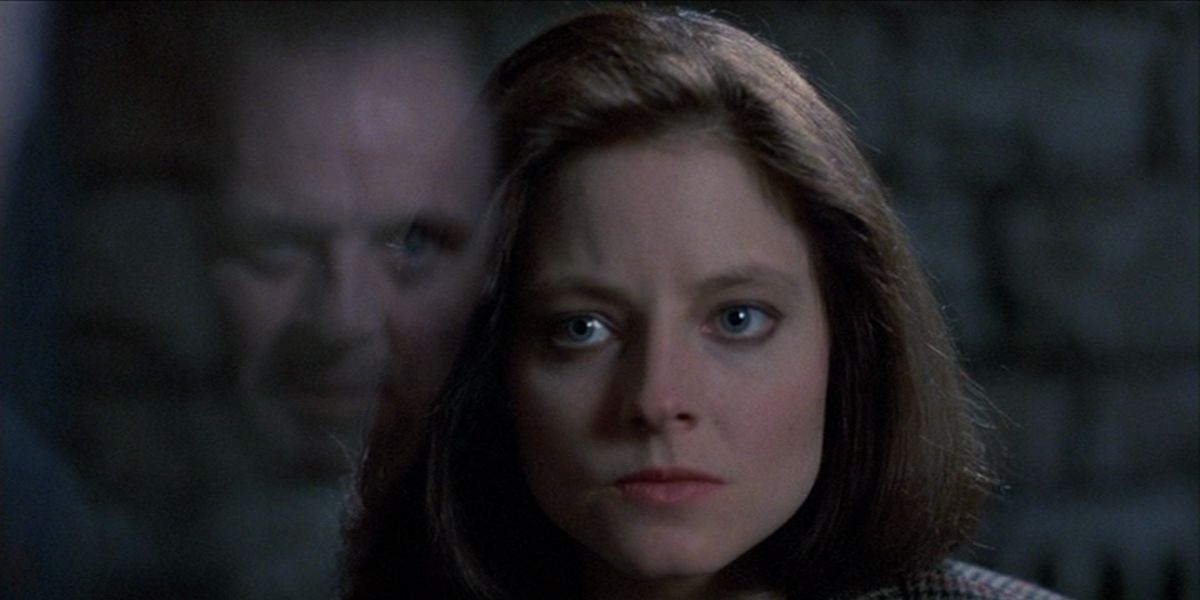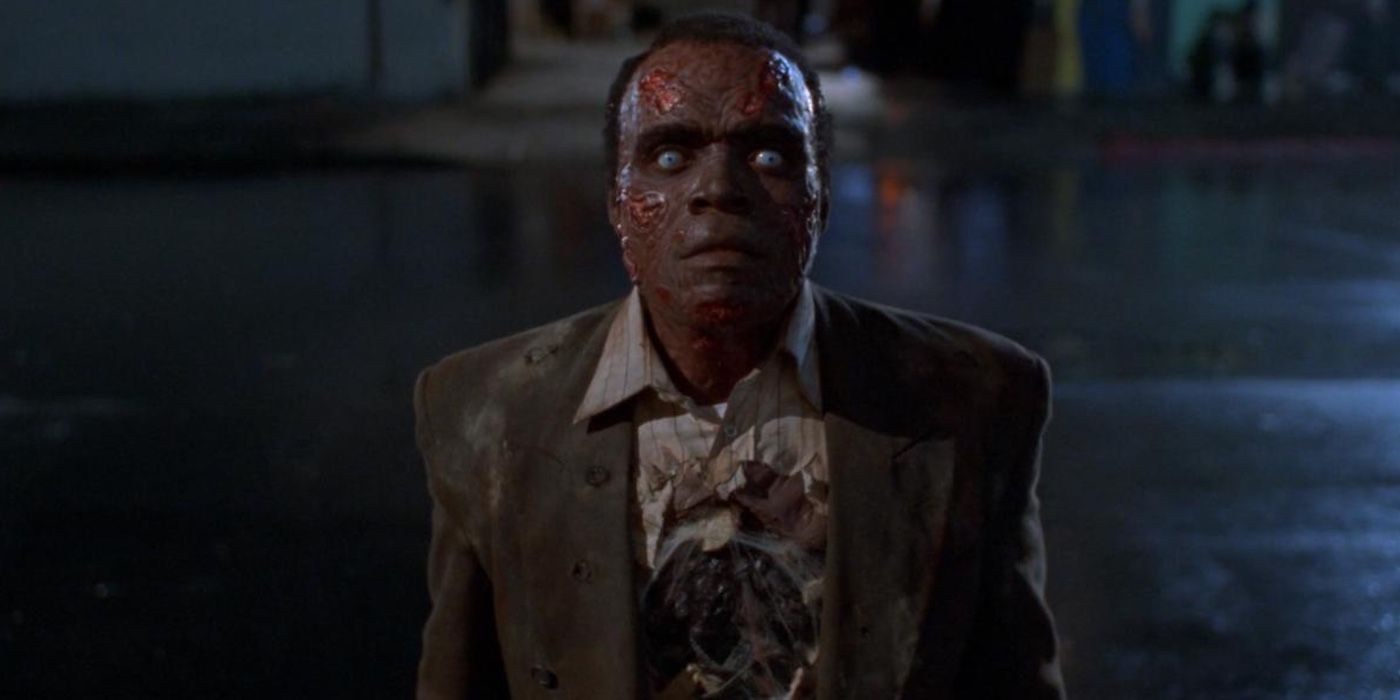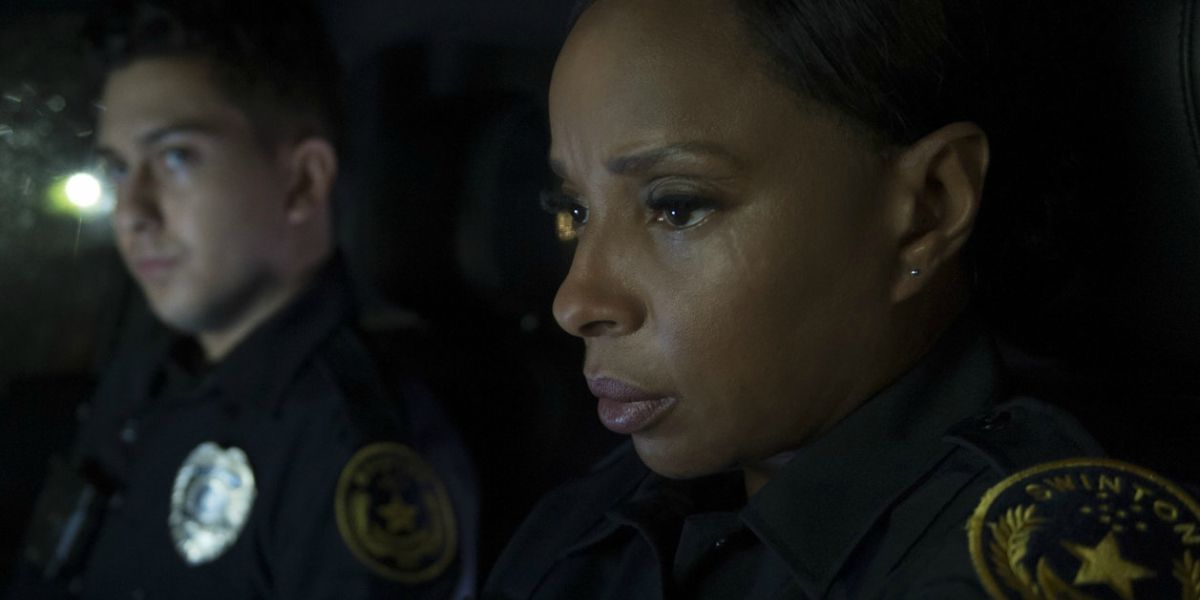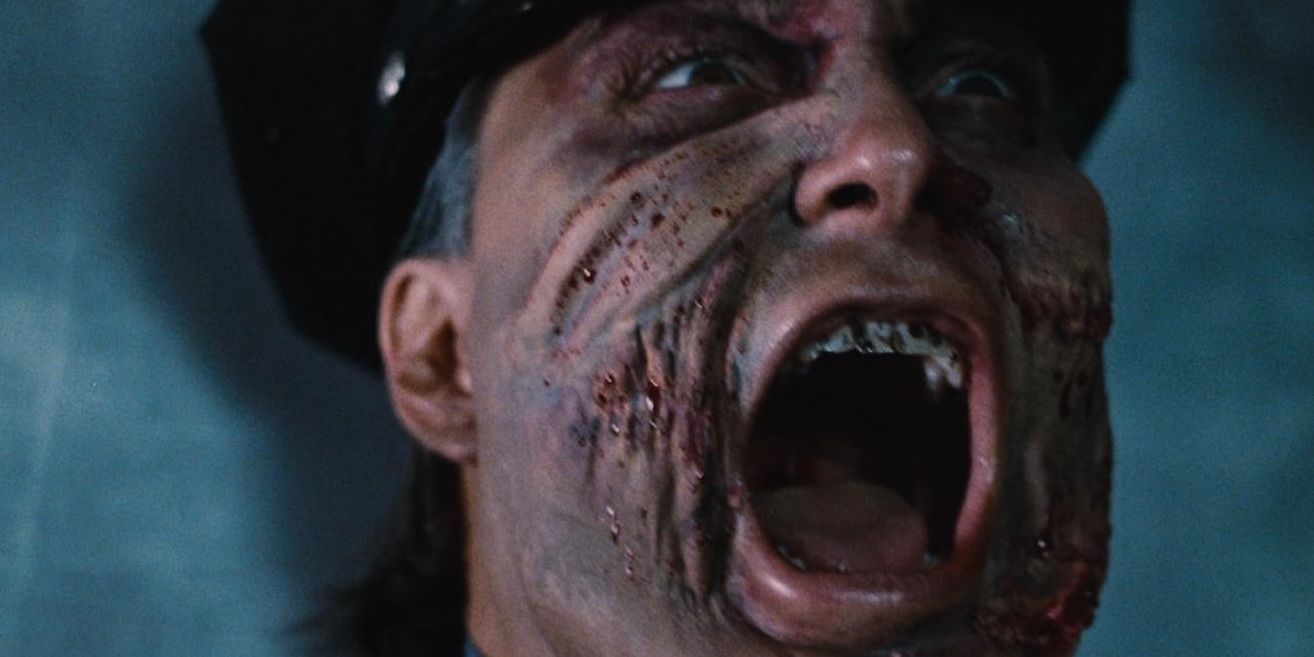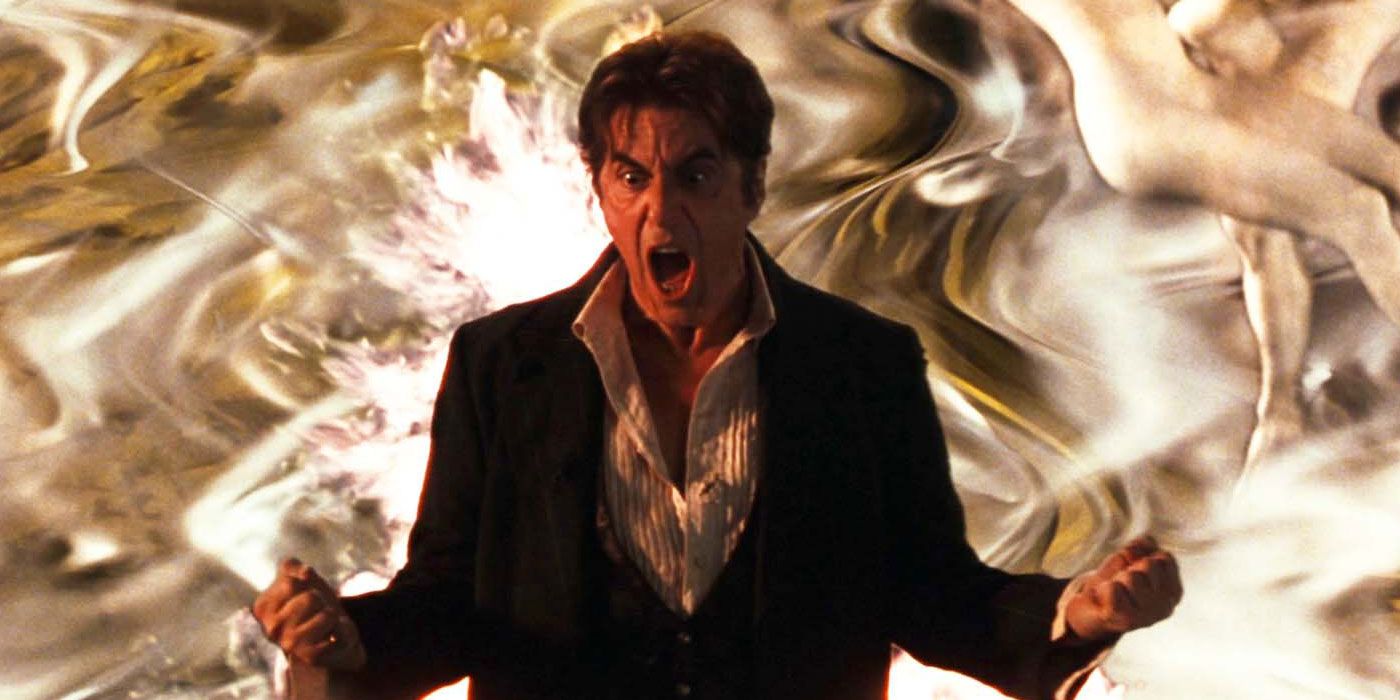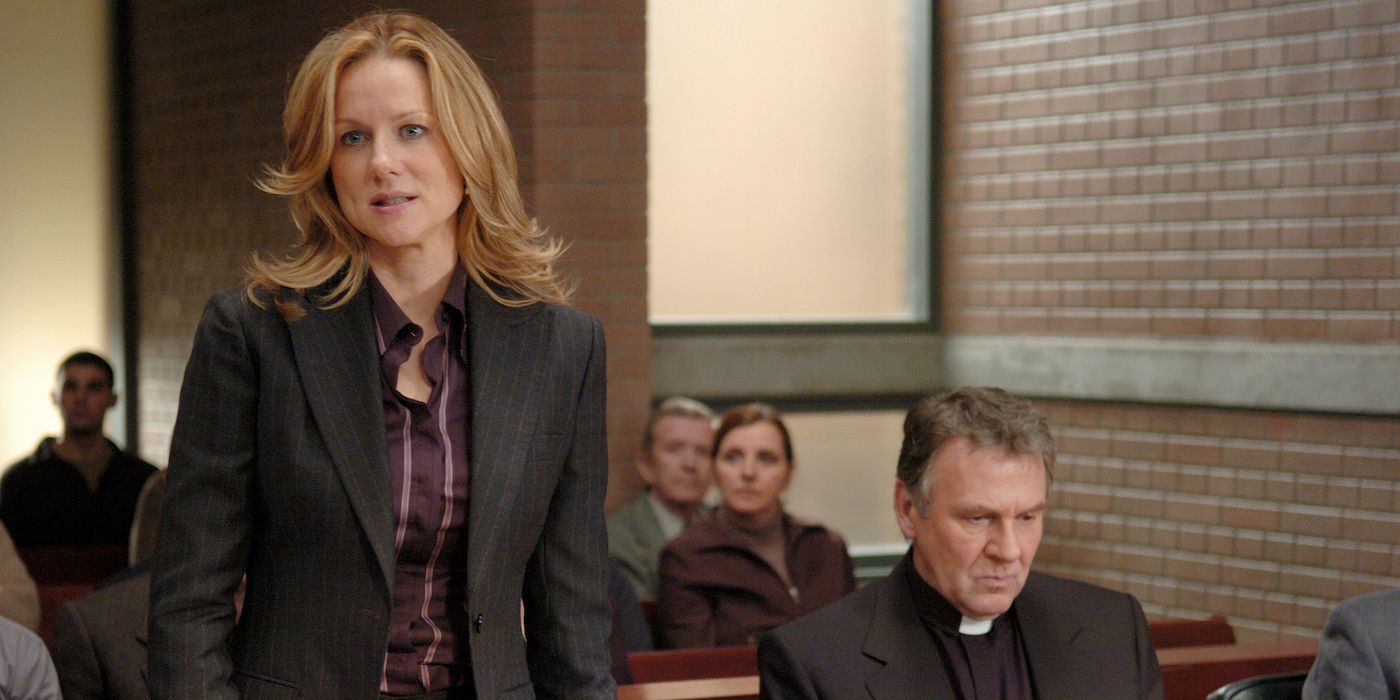The Conjuring: The Devil Made Me Do It isn't just a fun horror movie with a chintzy subtitle. In the film's context, "the devil made me do it" is a sincere legal defense made at the behest of paranormal investigators Lorraine and Ed Warren (Vera Farmiga and Patrick Wilson) in relation to a murder committed by Arne Johnson Ruairi O'Connor (a tactic and story based in truth). Arne cannot be held legally responsible for this murder because he was, objectively and under the eyes of the law, possessed by a demon. Does that sound strange to you? Does this feel like a collapsing of logic, of fact, of law & order in the service of unprovable superstition? Ed sees that argument coming, stating in the film that participants in a court of law acknowledge the existence of God every time they swear their testimony on a Bible. Doesn't it stand to reason these participants should acknowledge the devil, too?
So much of what we find effective about horror cinema comes from its examinations of the unknown, the unexplainable, the unfathomable. We stare at empty spaces terrified of what could lurk therein; we gape at supernatural distortions of our tangible reality; we shudder at the thought of our fellow humans resorting to vicious acts of violence. Our legal systems, conversely, whether in reality or in fiction, operate to make things as knowable, as explainable, and as rooted in reality as possible. Police forces and detectives and attorneys are ostensibly here to right wrongs using the forces of our corporeal world, to ground that which feels beyond our grasp. To combine these two focuses in a single film — to make a "legal horror film" or a "horror movie about the police" — is to explore the tension that arises when you smash contradictory purviews together. How do you explain what's designed to be unexplainable? How do you make mysterious what's designed to be explicit?
The Conjuring 3 is not the first time a horror film has gotten into the weeds of our criminal justice systems, but it certainly, alongside 2021's Spiral: From the Book of Saw, represents a mainstream apotheosis of this horror subgenre, coinciding with a mainstream apotheosis of our societal criticism of the criminal justice system. To interrogate what our genre film artists might be saying about these legal systems, our symbols of law and order, we took a look back at some of the most interesting horror films about the police, the law, and every other facet of "crime." While these films present a wide swath of ideas and conclusions, for the sake of accessibility, we've broadly defined and aligned them under three overall sub-categories. There is the horror film that presents law and order as a bastion of light in a world of dark; there is the horror film that presents law and order as the world of dark; and there is the horror film that questions in the present tense whether law and order is fundamentally light or dark.
A Good Apple in a Bad Orchard
The Silence of the Lambs might be our most mainstream-approved, critically acclaimed horror film; it won every main Oscar it was nominated for (Best Picture, Actor, Actress, Director, and Screenplay), a feat no other Oscar-nominated horror film has come close to achieving. Why, of all the incredible horror cinema produced, did this film so thoroughly cut through its peers and earn the bourgeois brass ring? I think it's because, despite its explicit descent into many genre-happy taboos — cannibalistic violence, the combination of visceral and psychological torture, and an ending that lets loose a monster back into the world — Silence of the Lambs is ultimately a simple story about light shining through the darkness, about good winning over evil by staying in control of evil. Clarice Starling (Jodie Foster) is our appropriately-named FBI trainee hero, a figure seen as being both an exceptional figure to the systems surrounding her (the all-timer shot of her in the center of an elevator full of tall FBI men) and a textbook example of these systems working as they are supposed to (Foster stopping our horrific Buffalo Bill, Ted Levine, through the established powers of FBI police work and, um, shooting a gun). The film suggests a source of trauma and temptation of darkness for Clarice, in her dream of screaming lambs in need of salvation and in her disquietingly watchable sparring partner of high-class cannibal Hannibal Lector (Anthony Hopkins). But by the end, despite Hannibal's conclusive unleashing, it's clear that Clarice represents a triumph of control, logic, and grounding in the face of unspeakable horrors.
Another classic horror film with a simple, "law versus horror" narrative nominated for Best Picture? Jaws, the tale of police chief Martin Brody (Roy Scheider) against a big ol' man-eating shark. Like Clarice, Brody is seen as being both an outsider of systems (most evidenced by his relationship with Mayor Larry Vaughn, Murray Hamilton, who greedily insists on keeping the beaches open) and a perfect example of his systems working intentionally (his insistence on keeping the beach closed as a representation of common-sense law and order fighting against the chaos of "evil nature"). Ultimately, Brody leads his duo of eccentric shark-hunters into stopping this shark with the very man-made, human choices of "shoving a scuba tank into the shark's mouth and shooting it so the shark explodes." This is about as explicit a depiction of "man's ability to control horrors using the laws of man" in a film as you'll ever see.
Other recent films, despite their status in budget, prestige, or unorthodox tone follow this path of traditional control. Recent horror-comedy/meta-mindfuck The Dead Don't Die, despite Jim Jarmusch's attempts to shove everything we know about a zombie horror film into a blender, is fundamentally a tale about two small-town police officers (Bill Murray and Adam Driver) doing their best to stay atop this untoppable, supernatural crisis. The Wicker Man in either version, the classic 1973 chiller or the infamous 2006 remake, is about a police officer doing his best to stop and fix a nefarious cult of horrors; while this police officer is eventually destroyed by the cult (and in the remake, some bees), he dies with the utmost confidence that he is the avatar of what justice and normalcy should be, and we believe him. And in Deliver Us From Evil, a title which tells us what we want its traditionally rendered characters of law and order to do for us, gruff policeman Eric Bana actually helps our spiritual warrior Édgar Ramírez in a climactic exorcism by handcuffing our possessed perp and calming down the increasingly volatile Ramírez. Ramírez might be here to unlock Bana's potential as an officer not just of earthly horrors but of the unexplainable ones, too, but the film assures us over and over that he was already more in control than he thought. The system stays strong even at its most bent.
A Bad Apple in a Bad Orchard
Conversely, some of the most incendiary, politically explicit legal horror films come from the point of view that the systems we trust on to wade through these horrors are fundamentally broken. Sometimes, these films still present the victims of their systems as our antagonist or "monster," putting the audience in the position of aligning against our protagonists and their corrupt, horrific goals. Tales From the Hood, a 1995 horror anthology, begins with the fiery segment "Rogue Cop Revelation," in which a Black, rookie officer played by Anthony Griffith watches in horror as his white, veteran colleagues beat the shit out of noted Black civil rights activist Martin Ezekiel Moorehouse (Tom Wright), their acts of unprovoked violence underscored by Billie Holliday's noted anti-lynching elegy "Strange Fruit." Griffith's Officer Smith protests these actions, arguing they need to stop immediately and take Moorehouse to a hospital; his white colleagues hiss at his dared betrayal, his willingness to rat out his fellow policemen, his belief that being a human being is more important than being an officer in uniform.
Eventually, this beating turns into out-and-out murder, the white officers injecting Moorehouse with drugs and pushing his car into a river, making it look like a self-inflicted OD. The guilt and complicity of Smith's inactive participation in this system of carnage causes him to descend into madness and alcoholism — and eventually, as he stares at a Moorehouse mural painted in tribute of the fallen symbol of goodness destroyed, it breeds a vengeance-seeking monster. A zombified Moorehouse emerges from another dimension, wreaking havoc on the police officers who murdered him. He is a "monster" in a technical term, but he is a monster created by these systems that are supposed to stop them. In a series of murderous acts of radical, forced empathy, Moorehouse takes these officers — including Smith himself, guilty of idle sin — and turns them into his victims. "Welcome to my world," he moans at them, a world of being forced into an undue death and martyrdom by an unduly vicious apparatus of terror.
Sometimes, these kinds of criminal justice-driven horror films interested in criticizing the legal system do so with a more traditional protagonist learning that the system they participate in is inherently rotten. There has been a glut of these types of films in recent years, in varying styles and strategies, likely produced as a response to the proliferation of such critical, some might say "radical" ideologies in mainstream discourse.
The Purge franchise, films of which have been coming out since 2013, is predicated on explicitly state-and-system-sanctioned violence, its high-concept premise involving the legalization of all crime for one day a year, its sometimes scattershot political conclusions usually leading to a total disillusionment of this performatively, satirically progressive system. Baskin, a 2015 festival-head-turner from Turkey, takes a group of explicitly corrupt, homophobic, vile police officers and throws them into the visceral depths of Hell. This Hell is, literally, an abandoned police station, a surreal, time-looping house of horrors serving to show just how responsible these men are for their grim fates, just how futile it is to rely on over-masculine concepts of power like "a gun" to assert change, just how stuck they are in their original sin of deifying and eventually becoming cops. The aforementioned Spiral takes the sometimes-politically motivated traps of the Saw franchise and chucks Chris Rock's maverick detective in the middle of a house of falling cards. He realizes, one dead cop after the other, that his surrounding systems and the people who propagate them (down to his own father, played by Samuel L. Jackson) are explicitly responsible for horrors, deaths, and corruption. Rock might fail his final game, but the audience now knows the new rulebook.
Of these contemporarily produced films, I might find 2020's Body Cam to be the most interesting, and even sometimes frustrating, in its waffling between different conclusions, some of which feel anathema to what we're all experiencing objectively on screen. Mary J. Blige stars as police officer Renee Lomito-Smith, on her first night of patrol after the tragic death of her son — and the public release of body cam footage where she's seen attacking someone on the street. This footage is joked about by her fellow officers; this strangely light response to uncontrolled violence, combined with so much dehumanizing language dropped casually by police officers ("mister and missus public" is how everyday people are referred to, words dripped with disdain, implying an explicit us vs. them relationship), combined with the film's setting of "an officer was just acquired for murdering an unarmed Black man" certainly promises a horror story in which the police, not our supernatural antagonist played by Anika Noni Rose, are the true sources of horrors.
This thrust, I would say, happens. And as Renee pores through these surreally refracted pieces of body cam carnage, of Rose's "monster" Taneesha Branz destroying the police in the way we've seen police destroy so many senselessly lost lives, we see her begin to understand the depths of her system's corruption and horrors. And when Renee learns the miserable backstory of Taneesha — her acts of vengeance are spurred by Renee's colleagues murdering Taneesha's son on duty before covering up the footage — she rightfully turns on her system-protecting colleagues, either standing by as Taneesha murders them to shreds, or eventually turning them in. But even despite this obvious protagonist philosophy shift, and despite Renee's emotional catharsis with Taneesha being predicated on both of their sons being dead, Renee doesn't quite absolve herself of the system entirely; "I am a cop first, bitch!" she even shouts at one of her corrupt colleagues during a climactic moment of mayhem. Body Cam ends on an ambiguous, complicated note of rest, despite its very uncomplicated, unrestful journey of systemic discovery.
Now, if you want to make a very unambiguous horror movie about how cops are maniacs, why not make a maniac cop the slasher villain of your movie called Maniac Cop? This 1988 low-budget classic, the first of a trilogy from exploitation maestros William Lustig and Larry Cohen, makes no qualms about the monstrosity of its maniacal cop, played with genuine menace by Robert D'Zar. Even as "good cops" like Tom Atkins and Bruce Campbell try earnestly to discover the identity of this killer cop by researching cops with records of instability, or making information that the killer was wearing a uniform available to the public, they are constantly met with a steady stream of cynically protective knee-jerk reactions, of keeping the divide between the police and the public as wide as possible, of taking any proactive measure as a personal affront to one's unshakable, powerful identity as "a cop." Maniac Cop strips the societal purpose of a badge down to its elements — you get a badge, you get power, you get to kill people. It does so in its slick slasher sequences, yes. But the most explicit piece of commentary, of delineating the horrors of everyday life in this system comes from a brief docu-style vignette where we watch a news team ask random folks on the street what they think of cops. These people paint a damning portrait of psychologically damaged men, of weakness hidden under perilous strength, of a system that demands its bootlicking participants stay scared or get dead. Maniac Cop is not a subtle film, but it is one that makes people feeling similarly feel heard and amplified.
An Apple Unsure of Itself
The most subtle category of these legal horror films, and maybe the most interesting, involves an external force of horror so unexplainable and uncontrollable that it causes a main character, bound to these human systems of criminal justice, to question whether they are inherently horrific themselves. Sometimes this question is answered explicitly by the end one way, sometimes the other way, and sometimes not at all.
Perhaps the biggest, splashiest, most notorious example of this kind of horror film is 1997's The Devil's Advocate, a movie pitched at a tone that makes Maniac Cop feel downright repressed by comparison. Filmed in glorious 2.4:1, finessed with all kinds of prestigious sheen at every level, and starring ginormous movie stars like Keanu Reeves, Charlize Theron, and Al Pacino (as the literal devil), The Devil's Advocate is one of Hollywood's most operatically rendered debates of interior morality. "A debate of interior morality" might seem like an unintuitive subject matter for a big genre film, but in fact it's the genre elements that make The Devil's Advocate exist at all. Both its courtroom drama sequences and horror-show set pieces make aggressively physical the essentially cerebral conflict at the center of the film, showing just how much runway these genres can give you for character studies. Reeves' Kevin Lomax is a constantly winning trial lawyer, even when his client is an obvious sexual predator against children. He's recruited by Pacino's literal devil to take this need to win, this descent into immorality to its most logical degree, here represented by becoming his next star attorney, a literal devil's advocate. Kevin struggles with what his destiny could be, how his original sin (getting a predator acquitted) could chart the course for said destiny, and how his present-tense choices could change it all. That is, if he wants it to change; Kevin makes so many destructive decisions in favor of advancing his status in this corrupt system, decisions that put his wife (Theron) in episodes of surreal danger. But after his own episode of surreal danger, Kevin makes the ultimate sacrifice — and The Devil's Advocate reveals just how literal a depiction of "interior debate" it was.
Fallen is another star-driven, '90s horror-thriller with a beloved face (Denzel Washington) as a stock character type from a legal genre (a maverick detective) who faces the potential of his own capacity for horror by a charismatic, literal demon. In this case, the literal demon Azazel possesses tons of different people, turning them into sneaky instruments of terror and evil. As such, we watch Washington's appropriately named Detective Hobbes carefully, as the already volatile cop might fall victim to this sway of invisible temptation himself. Its conclusion is definitive in one way — Hobbes makes a choice very similar to The Devil's Advocate to avoid his own moral falling — but ambiguously unending in another — Azazel finds its way into another host, a voiceover promising this unexplainable horror will continue to wreak havoc on our mortal world.
I find the '90s Japanese horror film Cure to be a stronger, stranger, and more character-driven exploration of these ideas. Instead of a literal, possessing demon, Cure's evil center is a hypnotist of sorts, played by Masato Hagiwara, who slowly and subtly mesmerizes people into committing vicious murders seemingly from nowhere. The film's central detective, played by Kōji Yakusho, is defined by his determination to explanation, to logic, to using comfortable systems of humanity to explain Hagiwara's tactics and goals. Ultimately, Hagiwara pulls out Yakusho's own sense of repressed, interior, and pure evil, even as Yakusho tries his best to push against it. It all results in as damning an ending of a horror film as you'll ever see. If it's not one system that'll get you, it's the one around the corner. What exactly are we trying to "cure," again?
For a film that walks directly on the center, managing by some miracle (or not) to use "pure ambiguity" as a storytelling advantage, look toward The Exorcism of Emily Rose. From director Scott Derrickson (the previously mentioned Deliver Us From Evil), the film, like The Conjuring 3, uses a true legal story as a springboard toward merging these contradictory conflicts — pure, supernatural evil versus explainable, human evil — together. But whereas Conjuring 3 feels pretty squarely on the side of the Warrens as convincing beacons of good in this world of darkness, who are more or less able to use the legal system to further their arguments, The Exorcism of Emily Rose keeps you guessing even after its conclusions. More importantly, it keeps itself guessing, too.
Laura Linney is an agnostic attorney hired to represent Father Moore (Tom Wilkinson), who is charged with the negligent homicide of young woman Emily Rose (Jennifer Carpenter). Emily, Moore believes, was possessed by the devil, a possession that robbed her of her life even after Moore's many exorcisms and attempts at bettering her life. But the state, represented by Catholic prosecuting attorney Campbell Scott, believes Emily suffered from a number of controllable, human maladies, and that Moore's attempts to wean her away from the explainable into the unexplainable killed her.
These lawyers' conflicting faith systems — a non-believer convincing us of belief versus a believer convincing us of non-belief — cannily fuse the potential conclusions drawn by the film in constantly engaging, entertaining sparks of conflict. Its traditional horror sequences, featuring a stellar Carpenter contorting and fighting with Wilkinson in demonic exorcism scenes, feel undeniably real, and undeniably unexplainable. But in its traditional legal drama sequences, both sides do their damndest to explain them in diametrically opposed methods of perceiving life (or, in the one case, an afterlife). The film constantly checks in with you, asking you what you believe now, presenting tons of questions without a ton of answers.
Which lawyer wins the case? The Exorcism of Emily Rose manages a conclusion that honors and complicates both perspectives of the uniquely legal and criminal justice system-oriented horror picture, a subgenre that tends to either suggest humans can explain and control horrors, or that humans' attempts to control are the horrors. But unlike any other on this list, or even of any other straight law drama or horror film, whoever "wins" isn't important. "These things either exist or do not exist," says Linney to a jury in her closing arguments. "To be honest, I don’t know. But I cannot deny that it is possible."

